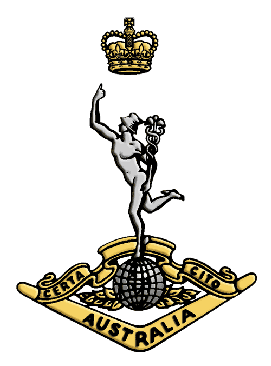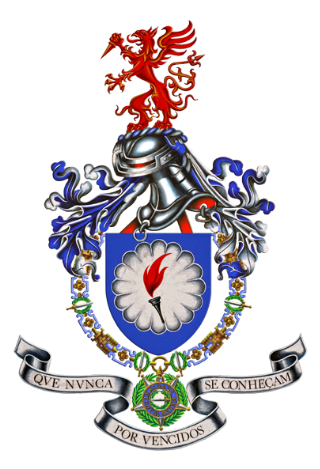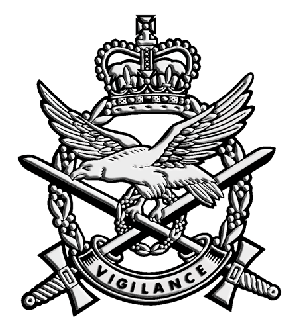Army Air Corps
The Army Air Corps (AAC) soldier needs a good standard of education although no formal qualifications are required. Airtroopers are educated and trained to have the ability and motivation to work on their own initiative. AAC soldiers will be trained in a wide range of skills providing a number of military and civilian vocational qualifications.
The Army Air Corps provides battlefield helicopters and some fixed-wing aircraft for the army, the main roles being attack of enemy armour, surveillance and target acquisition. AAC groundcrew need to be able to work as part of a team, and on occasion as an individual, and may be expected to defend forward operating bases and forward arming refuelling points, they also refuel and re-arm the helicopters and provide the essential communications to the aircraft and other army units.
AAC groundcrew work with a number of different types of helicopters including the, Lynx, Bell 212, Gazelle and Apache. They are also required to perform a number of other responsibilities within this employment, from helicopter troop drills, fire, crash rescue and helicopter rigger marshalling. There are a number of light goods vehicles utilised by the AAC, of which all groundcrew will be trained to drive and service, including Landrovers, Osh Kosh 22,000 litre refueller vehicles and the "detachable rack operating platform systems" (15 tonne flatbeds).
Training
Trade training
Having successfully completed phase 1 training, recruits move to the School of Army Aviation, Middle Wallop, Hampshire to begin aviation employment training, or phase 2 training. This begins with a three-week induction course, including car theory, practise and tests and an in-depth insight to the AAC. On successful completion of this module, and airtrooper will then complete the additional three trade specific modules:
Groundhandling skills
The groundcrewman's course lasts three weeks.
Communication skills
The class-three signaller's course is four weeks long.
Aircraft refuelling/hazardous materials training
This three-week course qualifies an aircraft refueller operator.
On successful completion of these trade modules, an airtrooper will be loaded onto a light goods vehicle course at the Defence School of Transport, in the East Riding of Yorkshire. This course takes between 10 and 12 weeks where the airtrooper will be taught to drive and maintain light goods vehicles used in the AAC. At the end of these courses the airtrooper will be qualified as an AAC soldier class 3, ready to be posted to his/her first regiment.

The Army Air Corps (AAC) is the aviation arm of the British Army, first formed in 1942 during the Second World War by grouping the various airborne units of the British Army. Today, there are eight regiments of the AAC, as well as two independent flights and two independent squadrons deployed in support of British Army operations around the world. Regiments and flights are located in the United Kingdom, Kenya, and Canada. Some AAC squadrons provide the air assault elements of 16 Air Assault Brigade, through Joint Helicopter Command.

The Royal Australian Corps of Signals (RASigs) is one of the 'arms' of the Australian Army. It is responsible for installing, maintaining, and operating all types of telecommunications equipment and information systems. The motto of the Signals Corps is Certa Cito and is translated as 'Swift and Sure', signifying the aim of the signal service – that communication be carried out with maximum speed and certainty. Like their British counterparts, the Royal Australian Corps of Signals' flag and hat badge feature Mercury, the winged messenger of the gods, affectionately referred to by members of the corps as "Jimmy".

The Defence Helicopter Flying School (DHFS) was a military flying school based at RAF Shawbury in Shropshire, England. The school, established in 1997, was a tri-service organisation and trained helicopter aircrews for all three British armed forces. It initially used the Eurocopter Squirrel HT1 and Bell Griffin HT1 helicopters, which were retained despite the introduction of the Airbus Juno HT1 and Airbus Jupiter HT1.

The Air Force and Air Defence, was one of three branches of the Yugoslav People's Army, the Yugoslav military. Commonly referred-to as the Yugoslav Air Force, at its height it was among the largest in Europe. The branch was disbanded in 1992 after the Breakup of Yugoslavia. In the year 1990, the Air Force had more than 32,000 personnel, but as a result of its more technical requirements, the Air Force had less than 4,000 conscripts.

Army Aviation Centre (AAC) Middle Wallop is a British Army airfield located near the Hampshire village of Middle Wallop, used for Army Air Corps training. The base hosts 2 (Training) Regiment AAC and 7 (Training) Regiment AAC under the umbrella of the Army Aviation Centre. 2 (Training) Regiment performs ground training; 7 (Training) Regiment trains aircrew on AAC aircraft after they complete basic training at RAF Shawbury.
Selection and training in the British Army is the process by which candidates for service are identified, inducted and brought onto the trained strength. The process is the responsibility of the Home Command.

The Regimento de Paraquedistas, based in Tancos, Portugal, is a unit of the Portuguese Army and serves as the instruction center for recruitment and training of the Portuguese paratroopers. This unit includes an entire battalion, acting as support and reserve for airborne units which contains for example, military war dogs and airborne pathfinders and an instruction battalion responsible for the forming of new paratroopers.

The Australian Army Aviation (AAAvn) is an administrative corps of the Australian Army. It was formed on 1 July 1968. The motto of the Australian Army Aviation corps is Vigilance.

The United States Marine Corps Aviation (USMCA) is the aircraft arm of the United States Marine Corps. Aviation units within the Marine Corps are assigned to support the Marine Air-Ground Task Force, as the aviation combat element, by providing six functions: assault support, antiair warfare, close air support, electronic warfare, control of aircraft and missiles, and aerial reconnaissance. The Corps operates rotary-wing, tiltrotor, and fixed-wing aircraft mainly to provide transport and close air support to its ground forces. Other aircraft types are also used in a variety of support and special-purpose roles. All Marine Corps aviation falls under the influence of the Deputy Commandant for Aviation, whose job is to advise the Commandant of the Marine Corps in all matters relating to aviation, especially acquisition of new assets, conversions of current aircraft, maintenance, operation, and command.

656 Squadron AAC is a squadron of the British Army's Army Air Corps. It was chosen as one of the AAC new Apache squadrons and in April 2004 started its conversion to role. The first phase of this completed in October 2004. The squadron was the first operational Apache squadron in the Army Air Corps and was awarded fully operational status along with the remainder of 9 Regiment AAC in June 2005. It is under 4 Regiment AAC as of 2007.
The Royal Signals trades are the employment specialisations of the Royal Corps of Signals in the British Army. Every soldier in the Corps is trained both as a field soldier and a tradesman. There are currently six different trades, all of which is open to both men and women:
No. 679 Squadron AAC is a British Army Reserve helicopter support squadron and is part of the 6 Regiment Army Air Corps. The squadron provides groundcrews to support Apache AH1 helicopters.
6 Regiment Army Air Corps is the sole Army Reserve regiment of the British Army Air Corps (AAC) falling under the Combat Arm of the British Army. The regiment consists of five Squadrons based around the south of the UK. 6 Regiment provides soldiers trained to assist Joint Helicopter Command on exercise and operations both in the UK and worldwide. The regiment provides support to support and attack helicopter in roles including Aviation Ground crew specialists, Aviation Communication Operators and Aviation Support Officers. The AAC regiment is supported by other Army Reserve elements including Royal Logistic Corps as chefs, Logistics and Supply, Adjutant General Corps as human resource specialists and Royal Army Medical Corps in the form of Combat Medical Technicians.
2 (Training) Regiment Army Air Corps is a regiment of the British Army's Army Air Corps. It is responsible for all of the Army Air Corps' groundcrew Phase 2 and 3 training, as well as the Ground Support Commanders Course for officers. The Regiment is based at Middle Wallop and is made up of two squadrons:

658 Squadron AAC is an Army Air Corps unit of the British Army that provides dedicated aviation support to the 22nd Special Air Service Regiment for domestic counter terrorism (CT) operations. The squadron is co-located with 22 SAS at Stirling Lines. The press has given the squadron, their helicopters, and the CT response force they enable, the nickname "Blue Thunder". The squadron is part of the Joint Special Forces Aviation Wing.

3 RegimentArmy Air Corps is a regiment of the British Army and is part of the [[1 Aviation Brigade Combat Team|and Joint Helicopter Command,(JHC).3AAC is based at Wattisham Flying Station in Suffolk, England. This regiment operates the Apache AH Mk1 and AH-64E Apache attack helicopters.
No. 660 Squadron AAC is a squadron of the British Army's Army Air Corps (AAC). The squadron traces its lineage to a Royal Air Force squadron that existed during the Second World War. In the late 1950s the squadron's numerical was transferred to the AAC and since its formation in 1969, it has operated as a British Army unit flying various types of battlefield helicopters. The squadron has been re-formed and disbanded on a number of occasions. The squadron is currently based at RAF Shawbury where it forms part of No. 1 Flying Training School, but it has been deployed operationally to Northern Ireland, Hong Kong and Brunei throughout its existence.

The School of Engineers is part of the South African Army Engineer Formation, which provides combat engineering corps training and teaching to military officers and personnel as well as other Military Schools throughout the South African National Defence Force. They are currently the only Military School in Southern Africa to formally present IEDD.

The page contains the current structure of the British Army. The British Army is currently being reorganised to the Future Soldier structure.
675 Squadron AAC is an Army Reserve helicopter support squadron of the British Army Air Corps that provides groundcrews to support Wildcat helicopters. The squadron is part of 6 Regiment Army Air Corps and is located in Somerset at Taunton and Yeovil.












